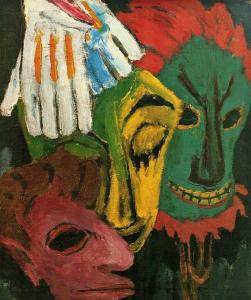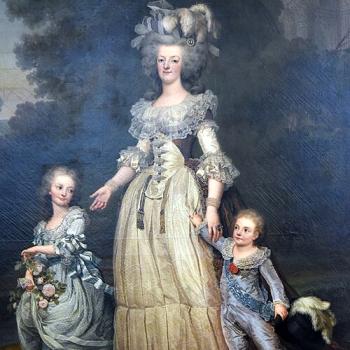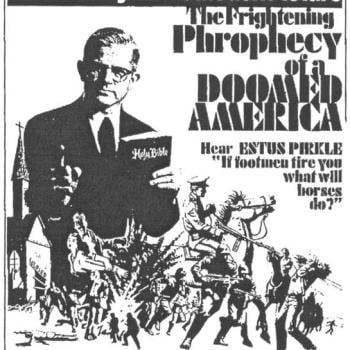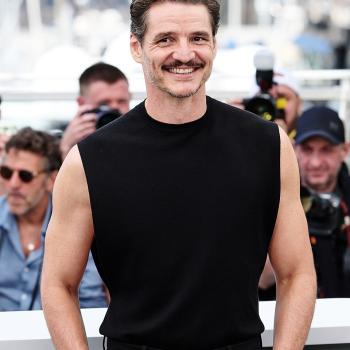
When Bo Burnham’s Netflix special, Inside (2021), lamented a year at home and a society gone awry, I lamented my decision to watch. Funny in parts, Inside felt perfect, not because it was just what we needed, but because it was just what we deserved. Funny in parts, Burnham’s feature-length musical dramedy crystallized the limp inadequacy of any resistance to prevailing norms. Every joke boiled down to little more than a pale bony index finger locked onto one target at a time, crooning—“doesn’t this suck? How about this? Man, this sucks too, right?” We laugh at the fact that everything seems unchangeably awful, comforted by our acknowledgement that everything seems, well, unchangeably awful. The world may be on fire, but hey, aren’t the flames pretty?
Where Inside at least attempted to stand outside the culture (how else can you point?), Freaky (2020) synthesizes the problem and the anger at the problem. It’s a grand Aufhebung of 21st century life, given digital flesh as the marriage of two much beloved B-genres—the body-swap comedy and the teen slasher.
The film follows seventeen-year-old Millie Kessler (Kathryn Newton) and her two best friends, Nyla (Celeste O’Connor) and Josh (Misha Osherovich) as they rush to fix a, uh, major malfunction. Millie has been stabbed with an ancient mystical dagger (stolen from a fancy mansion in the opening scene—I guess the owner had ties to some Indiana Jones bad guys) by a local serial killer, the Blissfield Butcher (Vince Vaughn). Its magical black-market energies are such that anyone hurt by the blade wakes up the next day body swapped with their assailant. She has 24 hours to figure out what’s going on, find her regular body, and stab herself so that she can go back to being a bullied outcast (why is this seemingly perfectly normal teen girl with a totally typical fashion sense and tight-knit friend group bullied? Because she’s shy, I think?).
In the meantime, Vaughn-turned-teen girl gives Millie a glow-up by putting on a red pleather jacket and tying her hair up into an Arianna Grande ponytail. There’s even the obligatory walk-down-the-hallway-and-everyone-turns-their-heads scene, complete with dubstep and mouths agape. Millie, meanwhile, has to learn how to be a 6’5 man with awful personal hygiene. The Butcher has to figure out how to commit murders with noodle arms and Mickey Rooney legs. I won’t spoil the ending, except to say that sometimes you’ve got to swap bodies with a maniac to find out how good you had it all along.
Freaky is fine in the way a competently made B-movie should be, but what makes it interesting is its investment in Zoomerifying the genre film. Millie’s best friends are Black and gay, but neither is more than a stereotype. We’re told by these characters that they should die first because that’s how these things go. But neither bites the dust. Josh constantly makes off-color jokes, which Nyla gets mad about; it’s fine, though, since, as Josh tells us, he’s gay. He’s allowed to be catty and uncouth. Early on we hear teens, gathered around a fire, trying to scare each other with tales of the Butcher. One of the kids says that they shouldn’t have sex (slasher stereotype, after all). We’re then treated to the movie’s only sex scene (not a slasher stereotype), which includes one character, whose only trait is that she’s a woke feminist, denying her boyfriend an orgasm, only to see both murdered by, well, the murderer. Score one for the incels, I guess.
The whole thing is so-called rainbow capitalism in movie form, a wonderful example of how to throw a fresh coat of paint on a rotting house. In plot, it’s utterly typical, including everything from the classic teen party scene to the chase sequence at the high school football field and the befuddled stare at the characters’ surroundings when they first realize they’ve swapped. Everyone who dies has done something wrong, just so we don’t feel too bad for them—basically, Cherry Falls (2000) meets The Hot Chick (2002). The veneer, however, is new. We get a couple underrepresented races and sexualities, but never in leading roles or with any depth. Millie’s family is all-female; her sister is a cop (instead of the usual dad). The mean girl at school is a stuck-up brunette, not a self-important blonde.
Fundamentally, Freaky is the same old corn syrup in a shiny new can. I guess it’s funny that we’re aware the stuff gives us cancer. Maybe we should, I don’t know, change the recipe?













